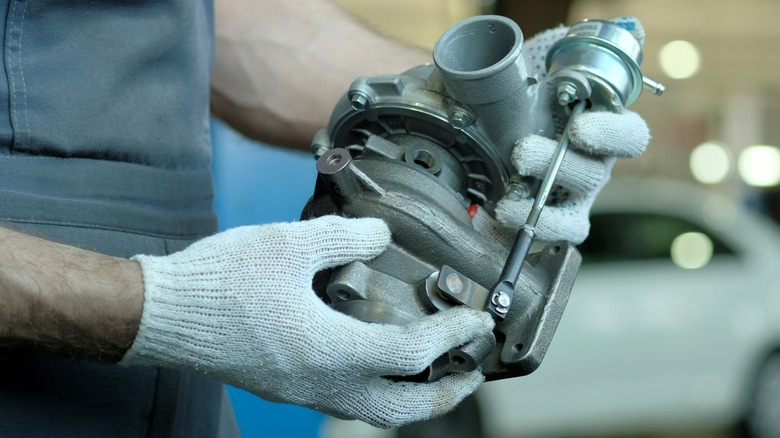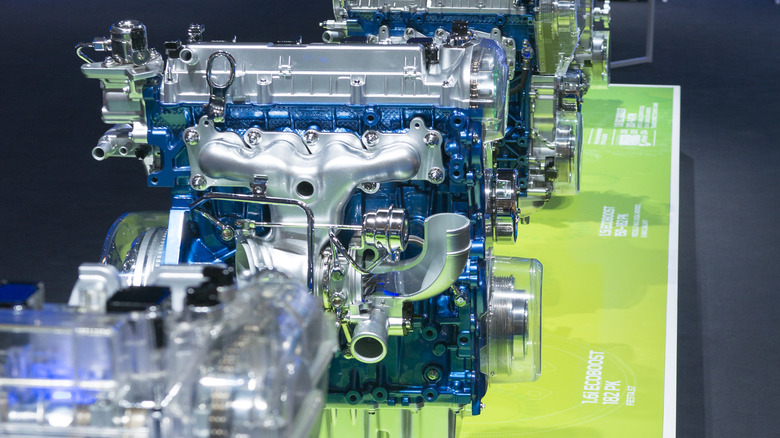How Many Turbos Do Ford EcoBoost Engines Have?
The first Ford EcoBoost engine arrived back in 2009, as a 3.5-liter turbocharged V6 powering the performance-oriented Taurus SHO. The automaker's range of EcoBoost engines has exploded in popularity since then, with Ford building its five-millionth EcoBoost engine in 2015. Back then, Ford claimed that it was building 200,000 every single month; if that rate of production has continued over the last decade, the number of EcoBoost engines out there would now have far surpassed the 20-million mark.
But Ford isn't just building a 3.5-liter EcoBoost V6, though. Since 2009, Ford has introduced a range of EcoBoost engines, some better than others. There are four-cylinder units, some still boast six cylinders, with a couple having just three. There are both large and small capacity EcoBoost engines, and many iterations of each capacity exist too — some EcoBoost engines even have cylinder deactivation. However, one thing that all EcoBoost engines have in common can be deduced from the "boost" in the name. Every EcoBoost engine uses forced induction in the form of a turbocharger or two, depending on the cylinder count.
Which EcoBoost engines have two turbochargers?
There is a simple way to deduce whether or not an EcoBoost engine has one or two turbochargers. All three- and four-cylinder EcoBoost engines have a single turbocharger; this includes capacities from 1.0 liters up to the Mustang EcoBoost's 2.3-liter mill. In comparison, all V6 EcoBoost engines are twin-turbocharged; this includes the 2.7-, 3.0-, and 3.5-liter EcoBoost V6 engines.
The latter is also the most powerful Ford EcoBoost engine available in 2025. The 3.5-liter twin-turbocharged EcoBoost V6 is available in numerous different guises. When in F-150 Raptor trim, though, it kicks out 450 hp and 510 lb-ft of torque. It is possible to squeeze even more power out of this engine with aftermarket tuning; Whipple, for example, offers a simple kit that pushes total output past 500 hp.
While Ford itself has not commented on why the larger engines use two turbochargers instead of one, many owners believe two is the better choice, as two turbochargers will spool faster than one large turbo. This, in turn, reduces turbo lag. In addition, having two smaller turbos means that Ford can package them neatly nearer the cylinders, where exhaust gases are hotter and more energetic, making them more effective.

